Filters: School Or College: "College of Social & Behavioral Science" Department: "Anthropology" Collection: "ir_uspace"
| Creator | Title | Description | Subject | Date | ||
|---|---|---|---|---|---|---|
| 1 |
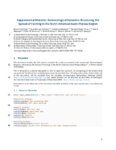 |
Codding, Brian F. | Supplementary Materials: Socioecological dynamics structuring the spread of farming in the North American Basin-Plateau Region | This document includes the code used to complete the analysis presented in the manuscript "Socioecological Dynamics Structuring the Spread of Farming in the North American Basin-Plateau Region" in Environmental 15 Archaeology. | environmental archaeology | |
| 2 |
 |
Codding, Brian F. | Socioecological dynamics structuring the spread of farming in the North American Basin-Plateau Region | The spread of agriculture is a major driver of social and environmental change throughout 25 the Holocene, yet experimental and ethnographic data indicate that farming is less profitable than foraging, so why would individuals choose to adopt agriculture leading to its expansion? Ideal distribution ... | Ideal free distribution model; population ecology; behavioral ecology; maize agriculture; Ancestral Puebloan; Fremont Complex | 2021 |
| 3 |
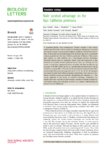 |
Macfarlan, Shane | Male Survival Advantage on the Baja California Peninsula | A consistent finding from contemporary Western societies is that women outlive men. However, what is unclear is whether sex differences in survival are constant across varying socio-ecological conditions. We test the universality of the female survival advantage with mortality data from a nineteenth... | ecology; health and disease and epidemiology; behaviour | 2020 |
| 4 |
 |
O'Connell, James F. | A Different Paradigm for the Initial Colonisation of Sahul: Archaeological, genetic, demographic and geographic perspectives | The questions of when and how humans reached Sahul, the Pleistocene continent of Australia and New Guinea, has remained a central issue of Australian archaeology since its development as an academic discipline in the mid-twentieth century. Additionally, this has been a dominant theme linking Austral... | Sahul; Wallacea; colonisation; isolation; genomics; mitochondrial DNA | 2019-08-20 |
| 5 |
 |
Codding, Brian F. | External impacts on internal dynamics: Effects of paleoclimatic and demographic variability on acorn exploitation along the Central California coast | Research into human-environment interaction in California prehistory often focuses on either the internal dynamics of adaptive decisions or the external impacts of environmental change. While both processes were surely driving prehistoric variability, integrating these approaches is not altogether s... | Acorn exploitation; Prehistoric land use; Behavioral ecology | 2016 |
| 6 |
 |
Vernon, Kenneth B. | Prearchaic land use in Grass Valley, Nevada: A novel statistical implementation of optimal distribution modeling | Using Prearchaic (PA) sites in Grass Valley, NV (Fig. 1), this project investigates (i) environmental factors driving variation in PA settlement and (ii) geomorphological factors driving variation in PA surface visibility. Building on previous research [1,2], we evaluate variables using Ideal Free D... | Prearchaic - Great Basin; Ideal Free Distribution; Maximum Entropy | 2018 |
| 7 |
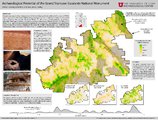 |
Yaworsky, Peter M. | Archaeological Potential of the Grand Staircase-Escalante National Monument | Executive proclamation 9682 reduces the size of the Grand Staircase-Escalante National Monument (GSENM), removing protections for at least 2,000 known archaeological sites and an unknown number of undiscovered cultural properties. Because only 10% of the GSENM's 1.9 million acres has been inventorie... | Grand Staircase-Escalante National Monument; Anthropology-Research | 2018 |
| 8 |
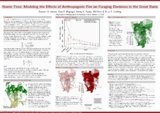 |
Vernon, Kenneth B. | Numic fires: modeling the effects of anthropogenic fire on foraging decisions in the Great Basin | Across Western North America, hunter-gatherers modified their surrounding environment with the application of fire (1; 11; 15). However, to date we lack a general theoretical framework to investigate the reasons why people would burn or its effects on traditional foraging economies. To begin to fill... | Behavioral ecology; Diet; Fire | 2015 |
| 9 |
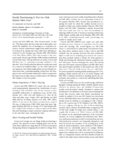 |
Hawkes, Kristen | Family provisioning is not the only reason men hunt | Gurven and Hill (2009) ask, "Why do mean hunt?" As they say, "The observation that mean hunt and women gather supported the simplistic view of marriage as a cooperative enterprise. Greater sophistication suggests that males may often be motivated by mating and status rather than offspring investment... | 2010-01-01 | |
| 10 |
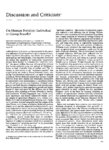 |
Hawkes, Kristen | On Human fertility: Individual or group benefit? | Caldwell et al. (CA 28:25-43) have pointed to the pervasive influence of Carr-Saunders's (1922) concept of population regulation throughout two-thirds of a century of anthropology and demography. | 1988-01-01 | |
| 11 |
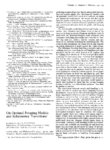 |
Hawkes, Kristen | On optimal foraging models and subsistence transitions | Layton, Foley, and Williams are right: "progress" doesn't explain transitions from hunting and gathering to agriculture, by theory and models from behavioral ecology might. | 1992-01-01 | |
| 12 |
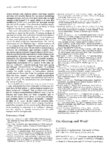 |
Hawkes, Kristen | On sharing and work (a comment on Bird-David) | Bird-David (CA 33:25-47) discusses reasons for the persistent vitality and wide appeal of Sahlins's influential characterization of hunter-gatherers as representatives of 'original affluence." | 1992-01-01 | |
| 13 |
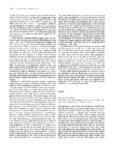 |
Hawkes, Kristen | On why male foragers hunt and share food: Reply to Hill and Kaplan | My argument is this: Some food resources, notably large animals when they are unpredictably acquired, are too expensive to defend. Other can claim shares of them without repaying shares of the same foods later. | 1993-01-01 | |
| 14 |
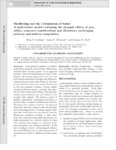 |
Codding, Brian | Shellfishing and the colonization of sahul: a multivariate model evaluating the dynamic effects of prey utility, transport considerations and life-history on foraging patterns and midden composition | Archaeological evidence of shellfish exploitation along the coast of Sahul (Pleistocene Australia-New Guinea) points to an apparent paradox. While the continental record as a whole suggests that human populations were very low from initial colonization through early Holocene, coastal and peri-c... | 2014-01-01 | |
| 15 |
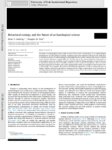 |
Codding, Brian | Behavioral ecology and the future of archaeological science | The future of archaeological science relies as much (if not more) on theoretical as on methodological developments. As with anything in biology, explaining past human behavior will require the application of evolutionary theory. As with anything in archaeology, theory is useless without clear ties t... | 2015-01-01 | |
| 16 |
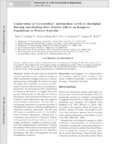 |
Codding, Brian | Conservation or co-evolution? Intermediate levels of aboriginal burning and hunting have positive effects on kangaroo populations in Western Australia | Studies of conservation in small scale societies typically portray indigenous peoples as either sustainably managing resources, or forsaking long-term sustainability for short-term gains. To explain this variability, we propose an alternative framework derived from a co-evolutionary perspective. In ... | 2014-01-01 | |
| 17 |
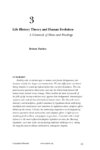 |
Hawkes, Kristen | Life history theory and human evolution : a chronicle of ideas and findings | Fertility ends at similar ages in women and female chimpanzees, but humans usually live longer and mature later. We also differ from our closest living relatives in weaning infants before they can feed themselves. The comparisons pose questions about when and why the distinctively human life history... | 2006-01-01 | |
| 18 |
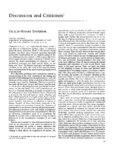 |
Hawkes, Kristen | On life history evolution (a comment on Chisholm) | Chisholm (CA 34:I-24) is right that the theory, models, and data of evolutionary biology apply to questions asked by social scientists. Work in life-history theory (Stearns 1992, Roff 1992, Charnov 1993) has especially provocative implications for the understanding of human development (see review i... | 1994-01-01 | |
| 19 |
 |
Hawkes, Kristen | The derived features of human life history | This chapter compares and contrasts the life histories of extant great apes in order to construct a hypothetical life history of the last common ancestor of all great apes and to identify features of human life history that have been derived during the evolution of our lineage. Data compiled from th... | 2006-01-01 | |
| 20 |
 |
Hawkes, Kristen | Grandmothers and their consequences | Both what we share and don't share with our primate cousins make us human. Easy enough to start a list. At least since Darwin, most would rate moral sentiments as distinctively human. But our modern selves didn't emerge from ancestral apes in one step. When did populations along the way become human... | 2012-01-01 | |
| 21 |
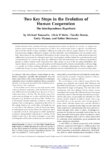 |
Hawkes, Kristen | Stag hunts or rearing environments? | Tomasello et al. have made the case that shared intentionality distinguishes humans from our nearest living relatives. What accounts for the difference? The answer they offer is Stag Hunt choices faced by ancestral foragers. Noting problems with that answer, I urge attention to a promising alternati... | 2012-01-01 | |
| 22 |
 |
Codding, Brian | Alternative aboriginal economies: Martu livelihoods in the 21st century | In the western deserts of Australia, hunting and gathering endures as an important social and economic activity. That foraging persists within the boundaries of developed industrialized nation states may come as a surprise to those who evaluate foraging as less profitable than agricultural, wage or ... | Aboriginal economics; Aboriginal foraging | 2015 |
| 23 |
 |
Codding, Brian | Codding, Brian: Living outside the box: An updated perspective on diet breadth and sexual division of labor in the Prearchaic Great Basin [Author's Manuscript] | A tremendous amount has been learned about the Prearchaic (before 9000 BP) Great Basin since we advocated a perspective of sexual division of labor based on Human Behavioral Ecology a decade ago. Many investigators have taken our advice and a few have challenged our assumptions and inferences. One o... | 2014-01-01 | |
| 24 |
 |
Bell, Adrian | Driving factors in the colonization of Oceania: developing island-level statistical models to test competing hypotheses (Electronic Supporting Material) | To test the model specification and fitting algorithms, we simulated data using randomly generated parameters, settlement chronology, and accessibility matrix for N islands. Using the function optim in R, we found the maximum likelihood estimates and compared them with the "true" parameter values us... | Oceania; Archaeology; Settlement; Statistical models | 2015-01-23 |
| 25 |
 |
Codding, Brian F. | Explaining prehistoric variation in the abundance of large prey: a zooarchaeological analysis of deer and rabbit hunting along the Pecho Coast of Central California | Three main hypotheses are commonly employed to explain diachronic variation in the relative abun dance of remains of large terrestrial herbivores: (1) large prey populations decline as a function of anthro pogenic overexploitation; (2 ) large prey tends to increase as a result of increasing social p... | Foraging; Resource depression; Prestige hunting; Paleoclimatic variability; Human behavioral ecology; Zooarchaeology; Central California | 2009-11-14 |
